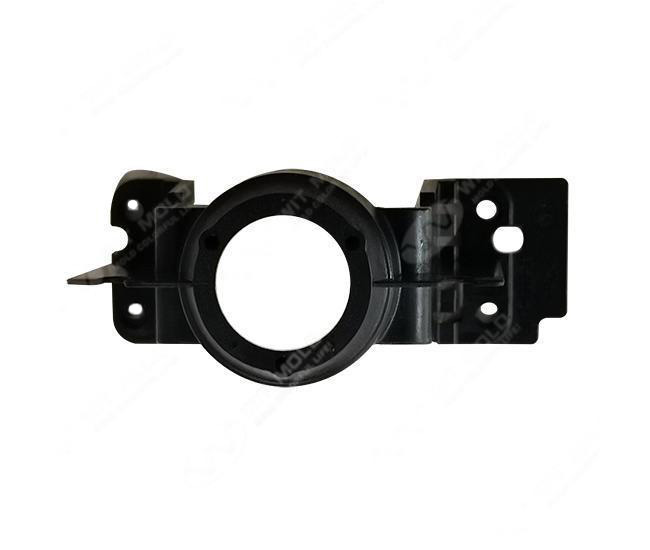Precision injection molding is a specialized manufacturing process used to produce complex plastic components with extremely tight tolerances and exceptional dimensional accuracy. Techniques that enhance precision include:
Micro injection molding – For producing miniature parts with intricate details.
Multi-cavity molding – Increases production efficiency while maintaining uniformity.
Gas-assisted injection molding – Reduces material usage and warping in thick parts.
Overmolding – Combines different materials for improved functionality and aesthetics.
Advanced mold temperature control – Maintains stable conditions for consistent results.
Selecting the right material is critical to achieving high-precision results:
High-performance engineering plastics – Such as PEEK, PBT, and PPS, known for stability and strength.
ABS (Acrylonitrile Butadiene Styrene) – Offers good dimensional stability and ease of processing.
Polycarbonate (PC) – Excellent clarity and impact resistance for optical or electronic parts.
LCP (Liquid Crystal Polymer) – Ideal for thin-wall, high-strength applications.
Nylon (PA) – Durable with excellent wear resistance.

To meet demanding dimensional requirements, manufacturers must optimize every stage of the process:
Precision mold design – Incorporate accurate cavity dimensions and proper venting.
Material preparation – Ensure thorough drying to prevent defects.
Stable processing parameters – Maintain consistent temperature, pressure, and cycle times.
High-quality tooling – Use hardened steel molds to minimize wear.
Regular mold maintenance – Prevents dimensional drift over time.
In-process quality control – Continuous monitoring with advanced measuring tools.
High precision molding is essential in industries where accuracy and reliability are non-negotiable:
Medical devices – Surgical instruments, diagnostic equipment housings, and microfluidic parts.
Automotive – Sensor housings, gears, and dashboard components.
Electronics – Connectors, switches, and optical components.
Aerospace – Lightweight, high-strength interior and functional parts.
Industrial machinery – Gears, valves, and sealing components.
The cost of a high-precision injection mold depends on several factors:
Complexity of design – More intricate molds require more machining time and expertise.
Number of cavities – Multi-cavity molds increase initial costs but improve per-part efficiency.
Tooling material – Hardened steel molds are more expensive but last longer.
Surface finish requirements – Polishing, texturing, or optical-grade finishes add cost.
Production volume – Large runs can offset high mold costs through economies of scale.
While initial investment is higher, precision molds offer longer lifespans, reduced scrap rates, and higher product consistency, often leading to long-term savings.
Precision injection molding typically achieves tolerances of ±0.005 mm to ±0.02 mm, depending on the material and part design. Factors affecting achievable tolerances include:
Part geometry – Complex shapes may require looser tolerances.
Material shrinkage rate – Must be accounted for in mold design.
Process stability – Consistent machine calibration is key.
Environmental conditions – Temperature and humidity control in production areas can impact final dimensions.
Previous: Come scegliere il miglior servizio di lavorazione CNC OEM per le tue esigenze?
Next: Choosing the Right Industrial Chocolate Mold for Mass Production
Comments
Please Join Us to post.
0